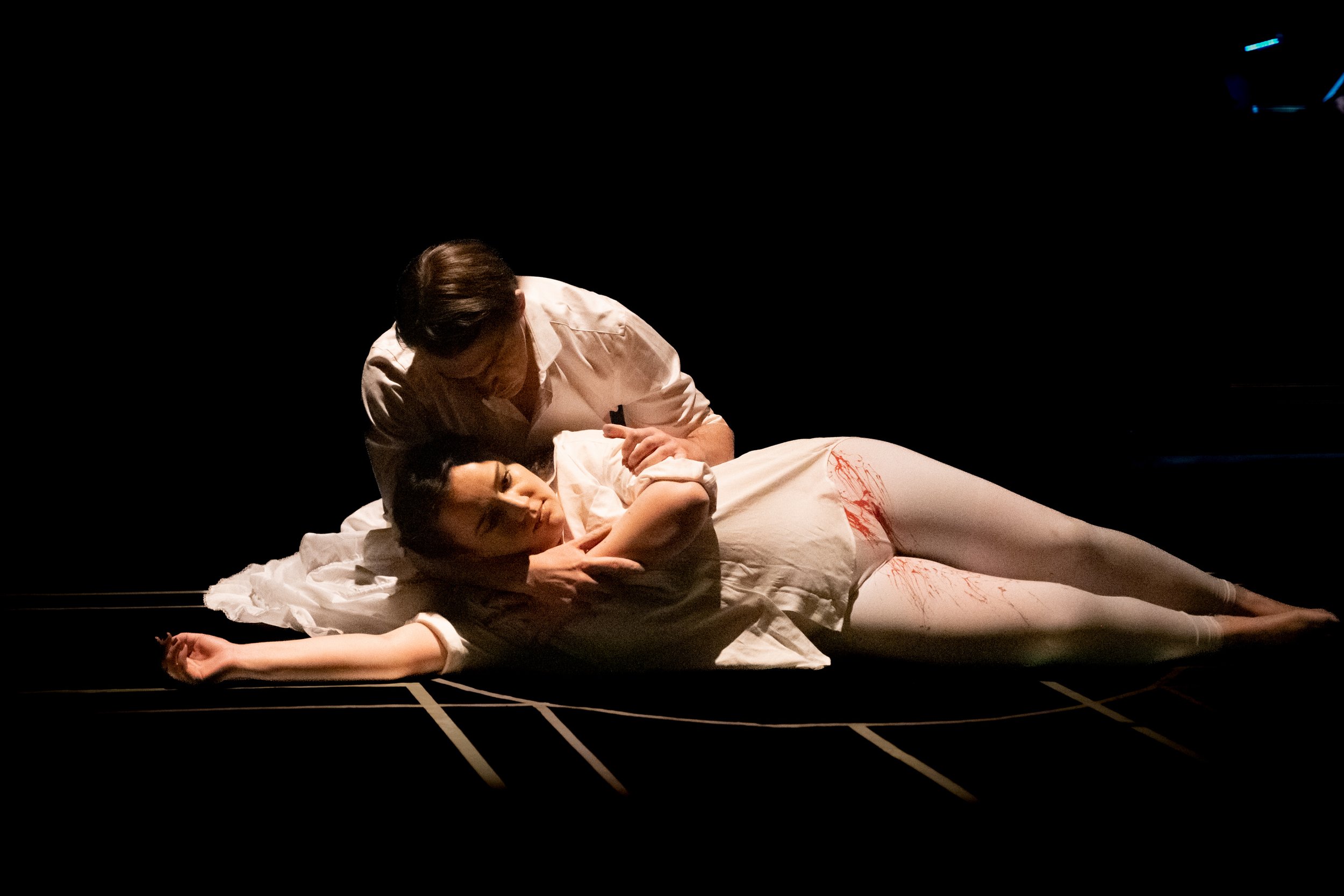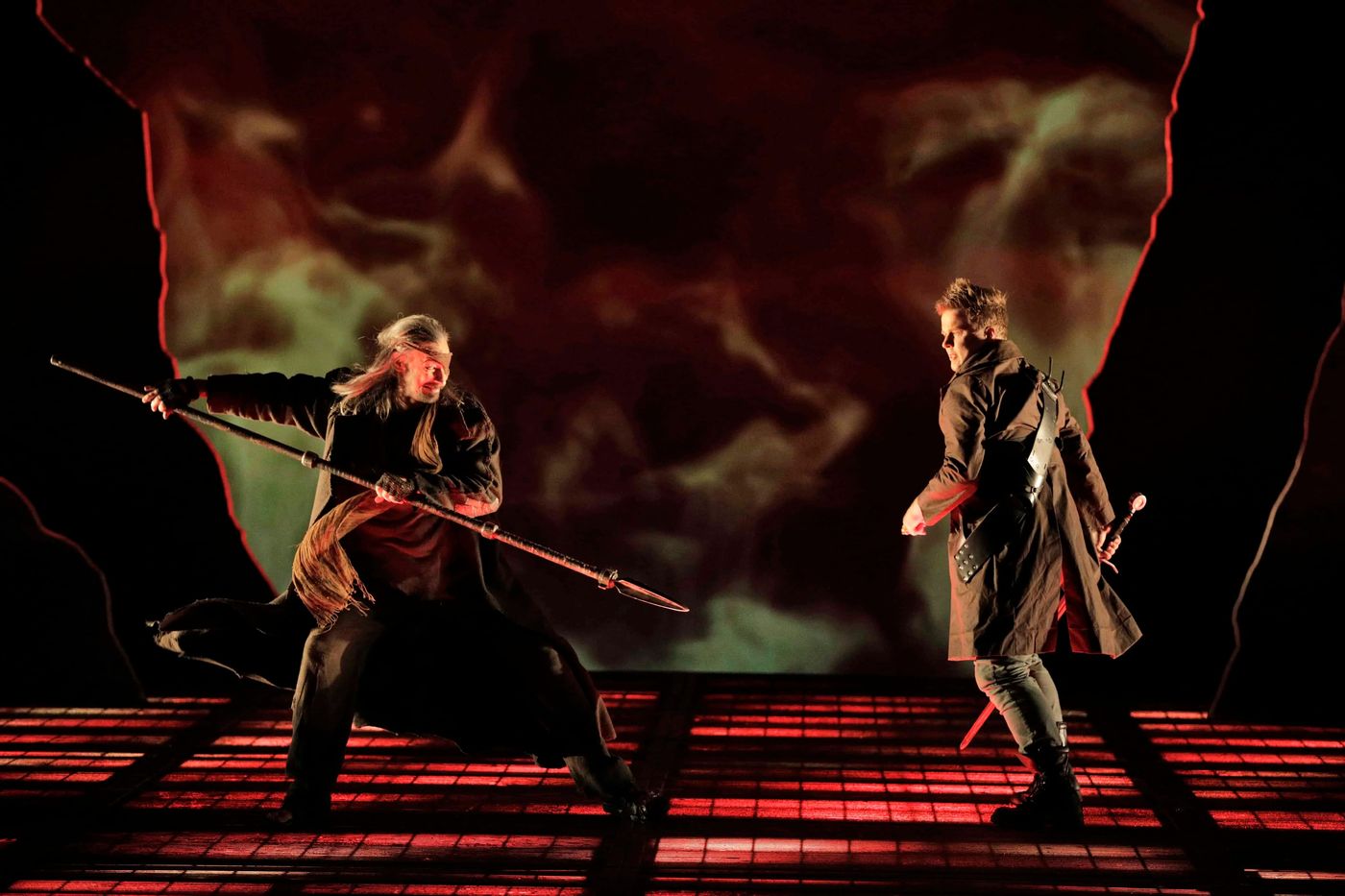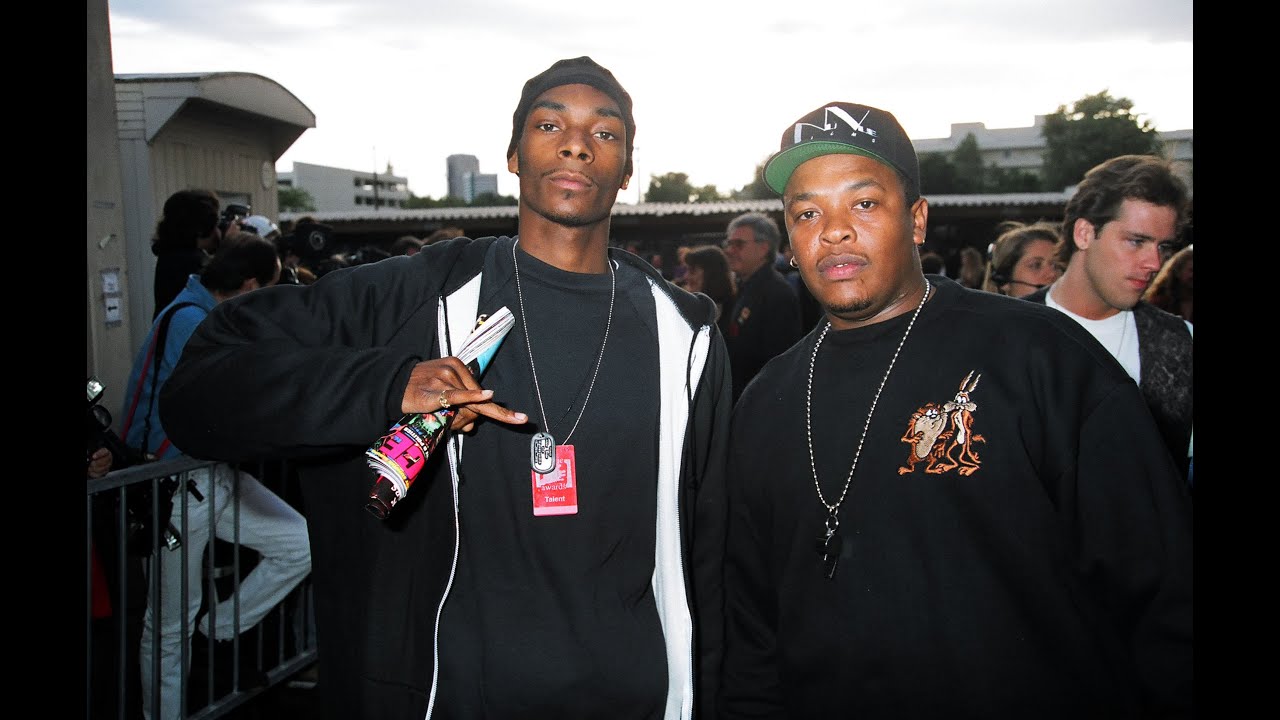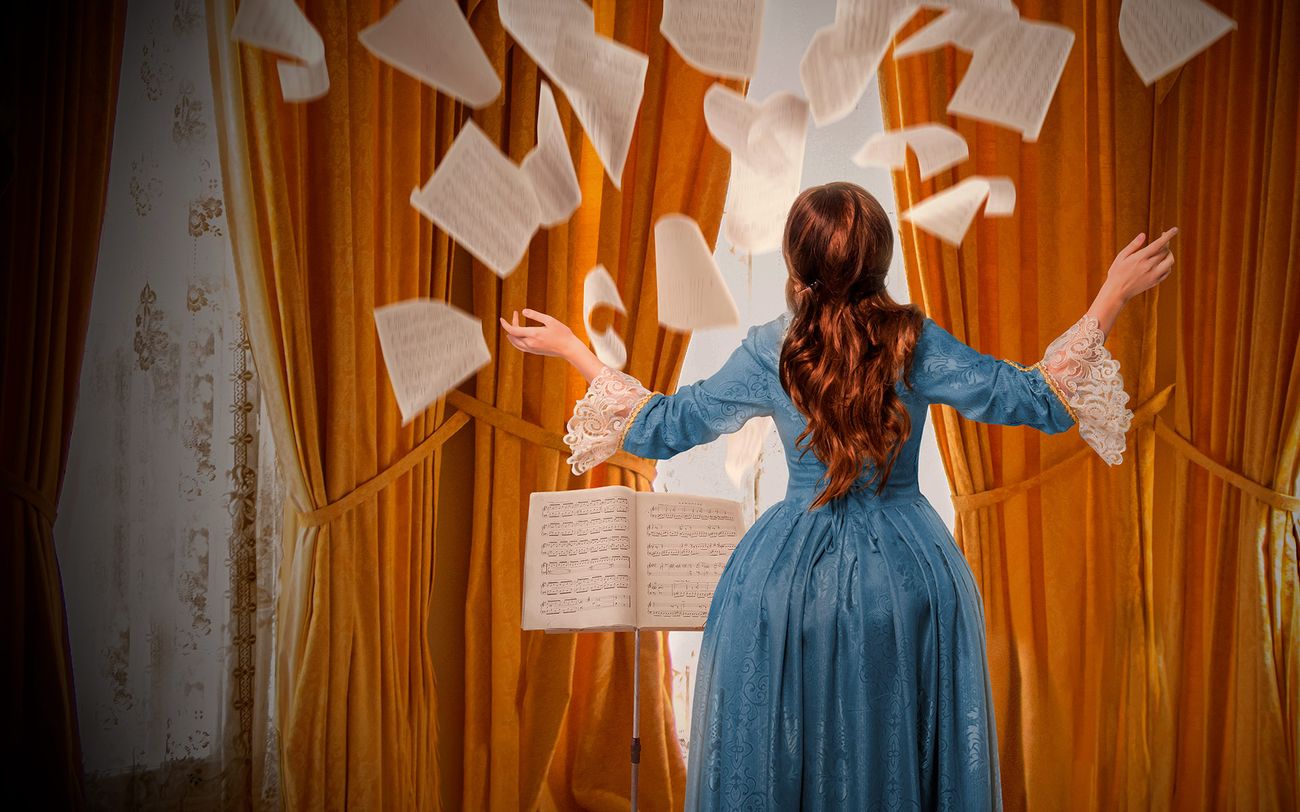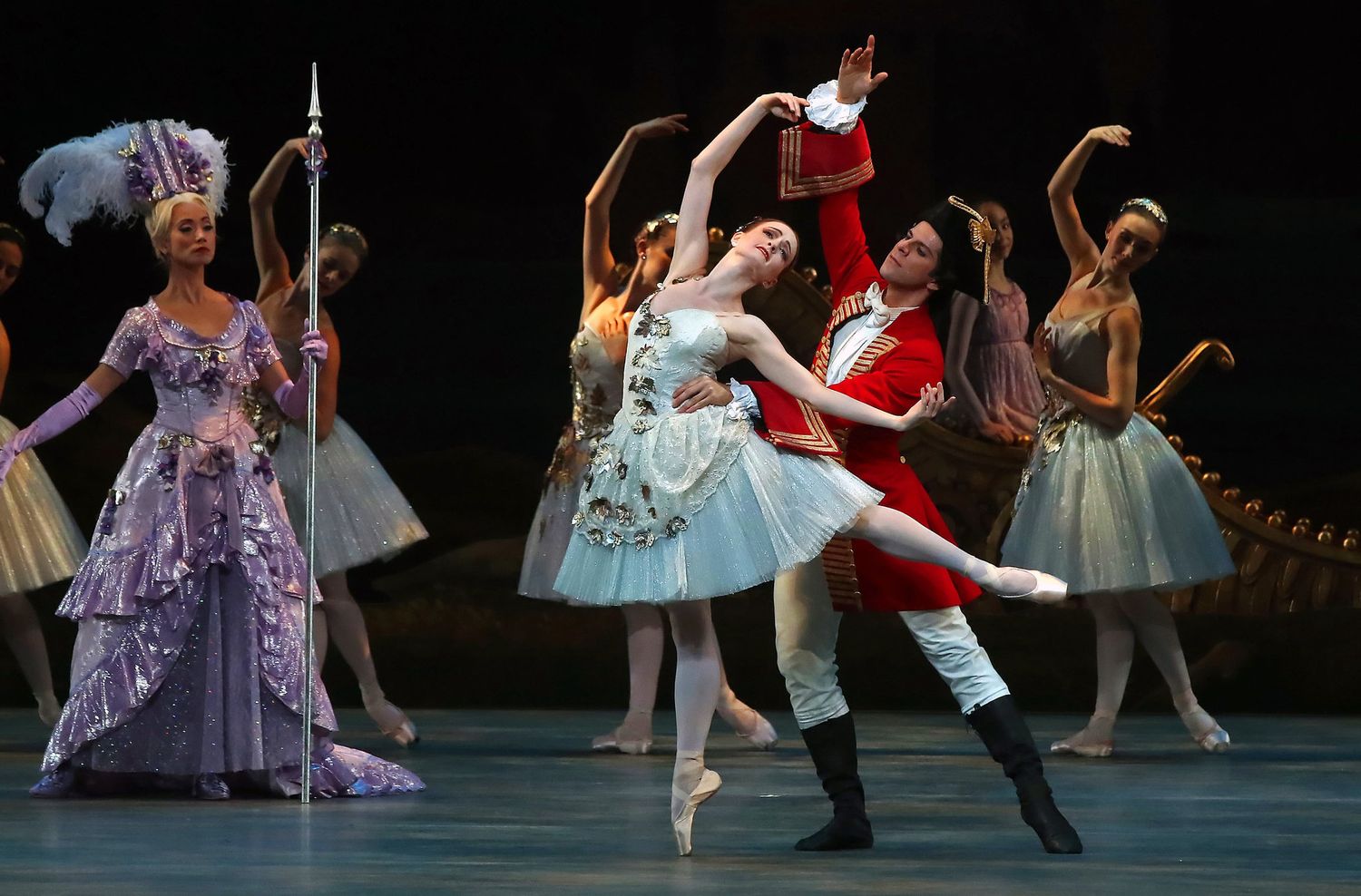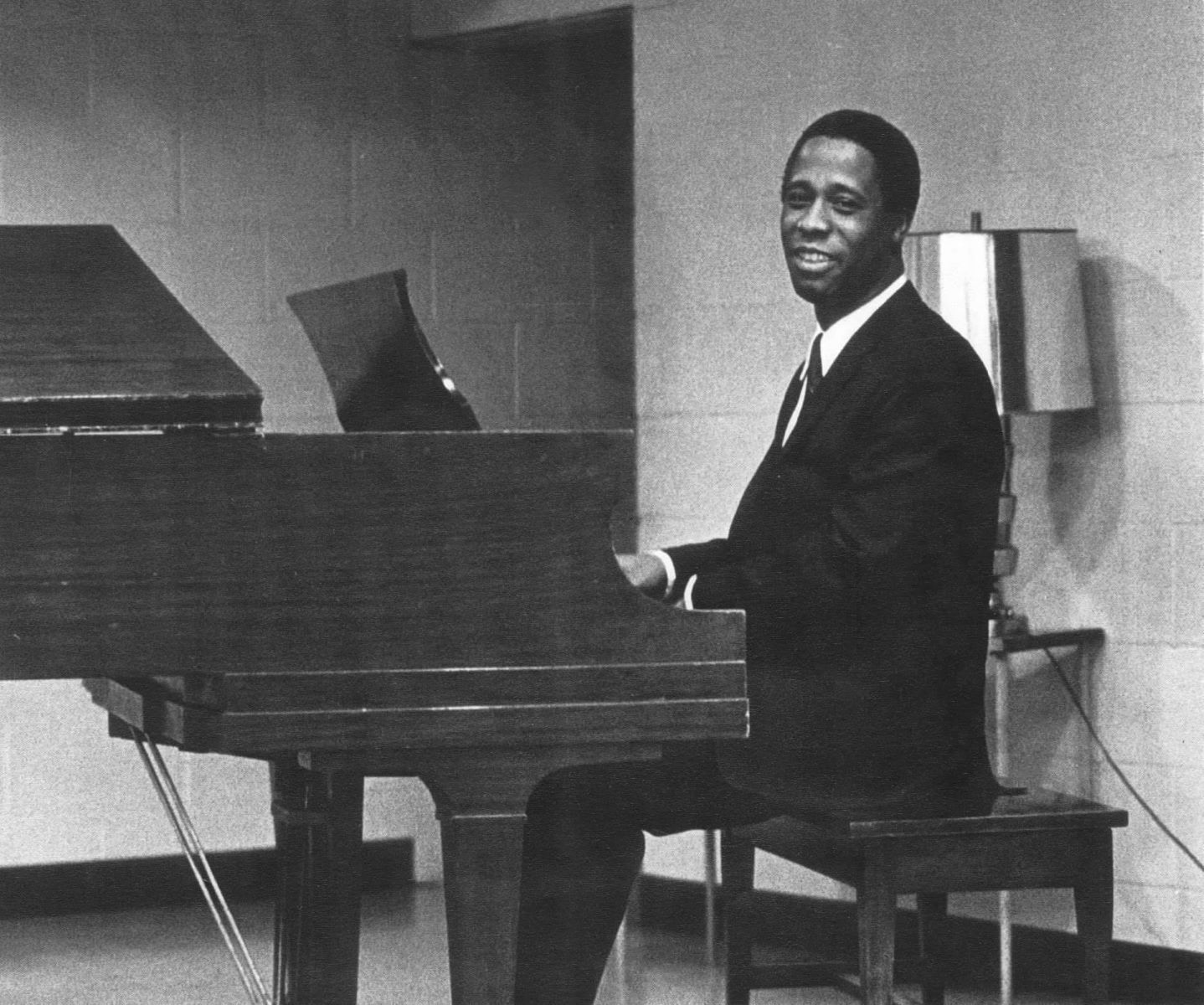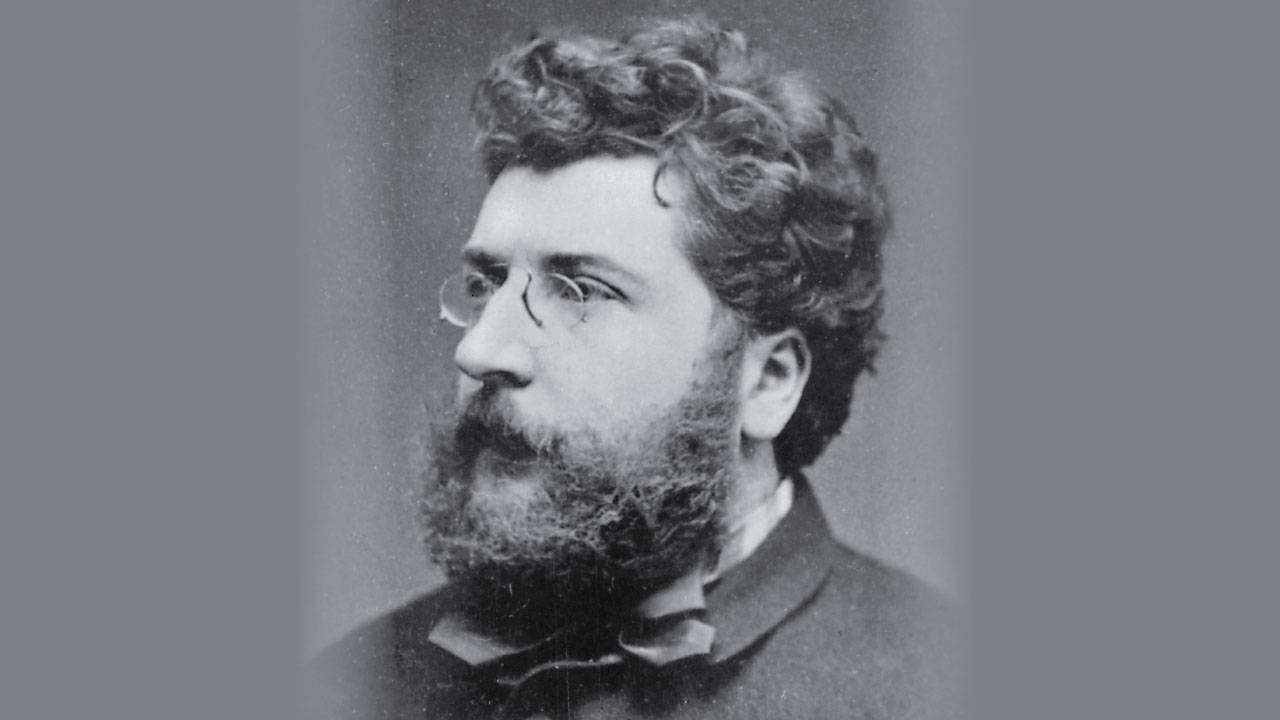Home>Events & Info>Opera>Who Wrote The Opera La Traviata
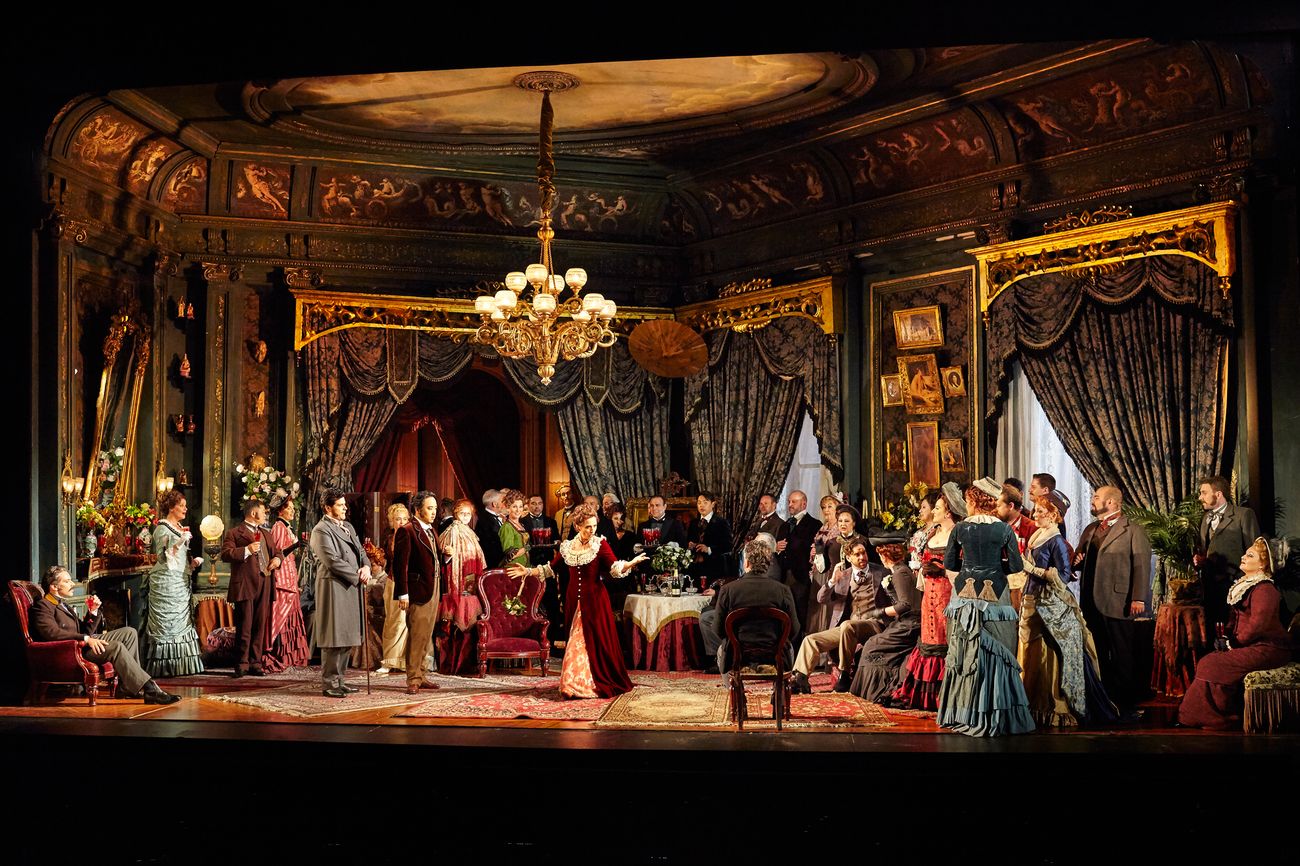

Opera
Who Wrote The Opera La Traviata
Modified: January 22, 2024
Discover the brilliant mind behind the iconic opera La Traviata and learn more about the captivating world of opera. Explore its fascinating history and find out who wrote this timeless masterpiece.
(Many of the links in this article redirect to a specific reviewed product. Your purchase of these products through affiliate links helps to generate commission for AudioLover.com, at no extra cost. Learn more)
Table of Contents
Introduction
La Traviata is one of the most beloved and frequently performed operas in the world. Its gripping storyline, memorable melodies, and emotional depth have solidified its place as a staple of the opera repertoire. But have you ever wondered who wrote this iconic work?
In this article, we will explore the origins of La Traviata, its composer Giuseppe Verdi, and the librettist Francesco Maria Piave. We will delve into the inspiration behind the story, the premiere and initial reception, the controversial character of Violetta, and the influence and legacy of this timeless opera.
La Traviata, which translates to “The Fallen Woman” or “The Woman Gone Astray,” tells the tragic story of Violetta Valéry, a Parisian courtesan living in the mid-19th century. The opera depicts her passionate but ultimately doomed love affair with Alfredo Germont, a young nobleman. Set against the backdrop of societal expectations, moral judgment, and the ravages of illness, La Traviata is a tale of sacrifice, redemption, and the power of love.
Giuseppe Verdi, one of the greatest opera composers of all time, composed La Traviata in 1853. Born in 1813 in Le Roncole, a small village in Italy, Verdi showed prodigious musical talent from a young age. He went on to write numerous operas that continue to enchant audiences to this day, including Rigoletto, Aida, and Otello.
Francesco Maria Piave, an Italian librettist, collaborated with Verdi to bring La Traviata to life. Piave had previously worked with Verdi on several other operas and was known for his ability to craft compelling and poetic texts that complemented Verdi’s music perfectly. The partnership between Verdi and Piave resulted in the creation of some of the most iconic operas in history.
Stay tuned as we embark on a journey to discover the story behind the creation of La Traviata and the talented individuals responsible for its inception. From its premiere in 1853 to its enduring legacy today, La Traviata continues to captivate audiences around the world and is a testament to the power and beauty of opera.
The Origins of La Traviata
La Traviata has its roots in a play titled “La Dame aux Camélias” written by Alexandre Dumas fils in 1848. The play itself was based on Dumas’ experiences with Marie Duplessis, a real-life Parisian courtesan. The tragic love story depicted in the play captured the imagination of audiences, and it wasn’t long before the story found its way to the opera stage.
In 1850, Giuseppe Verdi attended a performance of “La Dame aux Camélias” in Venice and was deeply moved by the narrative. He saw the potential for the story to be transformed into an opera and approached Francesco Maria Piave to write the libretto. Piave, skilled in crafting poetic texts, was an ideal collaborator for Verdi.
However, adapting the story from the stage to the opera posed certain challenges. Verdi and Piave had to condense the plot and simplify some of the characters to accommodate the operatic form. They made significant changes to the story, focusing more on the love affair between Violetta and Alfredo while downplaying the broader social and political commentary present in Dumas’ play.
Verdi’s decision to tackle a subject matter as scandalous as the life of a courtesan was met with resistance from the censors of the time. The opera’s original title, “Amore e morte” (Love and Death), was deemed unacceptable due to its provocative nature. Verdi persisted, and after various negotiations and compromises, the opera was eventually accepted under the title “La Traviata” (The Fallen Woman).
The themes explored in La Traviata—the conflict between societal expectations and personal desires, the condemnation of those deemed “fallen,” and the tragic consequences of love—resonated with audiences of the time. The story struck a chord with both the elite and the general public, as it explored universal emotions and dilemmas that transcended the confines of social class.
The musical composition of La Traviata is as remarkable as the story itself. Verdi’s melodic genius shines throughout the opera, with soaring arias, heartfelt duets, and powerful ensemble numbers that convey the emotions of the characters and propel the narrative forward.
With its rich and emotive music, combined with a poignant and timeless story, La Traviata has become a masterpiece that continues to captivate audiences around the world. Its origins in a scandalous play, the collaboration between Verdi and Piave, and the adaptation of the story from stage to opera all contribute to its enduring appeal. La Traviata is a testament to the transformative power of art and the ability of opera to touch hearts and souls across generations.
The Composer: Giuseppe Verdi
Giuseppe Verdi, often referred to as the “Father of Italian Opera,” was the brilliant composer behind La Traviata. Born in 1813 in the small village of Le Roncole, Italy, Verdi showed early musical talent and began studying music at a young age. His compositions would go on to shape the future of opera and establish him as one of the most influential composers of all time.
Verdi’s career spanned several decades, during which he composed over 25 operas. His works are known for their melodic richness, dramatic intensity, and profound emotional depth. Verdi’s ability to deeply connect with audiences by capturing the essence of human emotions is evident in La Traviata, where the music becomes an integral part of the storytelling.
As a composer, Verdi had an innate understanding of the human voice and how to showcase its beauty and expressiveness. His arias, duets, and ensemble pieces in La Traviata are meticulously crafted to highlight both the technical prowess of the singers and the emotional depth of the characters they portray.
Verdi’s music in La Traviata effectively conveys the inner turmoil, longing, and passion experienced by Violetta and Alfredo. From the hauntingly beautiful “Sempre libera” aria, where Violetta asserts her desire for freedom, to the heart-wrenching duets between Violetta and Alfredo, Verdi’s music captures the essence of their love story and the emotional journey they undertake.
Verdi’s use of recurring musical motives in La Traviata adds depth and cohesion to the opera. For example, the haunting prelude to Act III foreshadows the impending tragedy, tying together various thematic elements throughout the opera. Verdi’s masterful orchestration enhances the mood and atmosphere of each scene, immersing the audience in the world of the characters.
Throughout his career, Verdi was not only a masterful composer but also a visionary who pushed the boundaries of opera. He introduced innovations in stagecraft, vocal writing, and storytelling that continue to influence opera production today. Verdi’s ability to create complex characters and explore intricate psychological landscapes contributed to the enduring appeal of his works, including La Traviata.
Verdi’s impact on the operatic world cannot be overstated. His works continue to be performed on stages around the globe and are beloved by opera enthusiasts and newcomers alike. With his gift for melody, his ability to evoke emotions, and his storytelling prowess, Giuseppe Verdi solidified his place as a legendary composer, forever associated with the timeless beauty and power of La Traviata.
The Librettist: Francesco Maria Piave
Behind every great opera is a skilled librettist who crafts the words that bring the music to life. In the case of La Traviata, that librettist was Francesco Maria Piave. Born in 1810 in Venice, Italy, Piave collaborated with Giuseppe Verdi on several operas, including some of Verdi’s most renowned works.
Piave’s expertise lay in his ability to create poetic and poignant texts that perfectly complemented Verdi’s music. He had a deep understanding of dramatic structure and a keen sense of how to convey emotion through words. His collaboration with Verdi on La Traviata showcased his talents as a masterful storyteller.
Verdi and Piave faced challenges in adapting Alexandre Dumas fils’ play “La Dame aux Camélias” into an operatic libretto. Piave had to condense and reshape the plot to fit the operatic form, while also capturing the essence of the characters and their emotional journeys.
Piave’s libretto for La Traviata expertly distills the complex relationships, societal expectations, and internal conflicts of the characters into concise and evocative dialogue. He captures the passion, despair, and redemption that define the story, making it accessible to both performers and audiences alike.
One notable aspect of Piave’s work on La Traviata is his handling of the character of Violetta Valéry. Piave’s text brings to life the complex personality of this tragic heroine, highlighting her inner struggles, vulnerability, and unwavering determination.
Piave’s collaboration with Verdi extended beyond the libretto. They shared a close working relationship, with Verdi often providing musical suggestions and guidance to Piave during the creative process. This collaboration resulted in a seamless fusion of music and text that elevated the emotional impact of La Traviata.
Francesco Maria Piave’s contribution to La Traviata goes beyond his role as a librettist. His understanding of the human condition, his skillful use of language, and his ability to translate complex emotions into powerful words helped shape the success of the opera.
The enduring popularity of La Traviata is a testament to the collaborative genius of Verdi and Piave. Their partnership created a masterpiece that continues to resonate with audiences worldwide, touching hearts and minds with its timeless themes of love, sacrifice, and redemption.
Francesco Maria Piave’s talent as a librettist played a crucial role in the creation of La Traviata, ensuring that the words on the page were as captivating and emotionally compelling as the music that accompanied them.
The Inspiration behind the Story
The story of La Traviata, with its themes of love, sacrifice, and societal judgment, draws inspiration from real-life events, as well as the romantic imagination of its creators. Alexandre Dumas fils’ play “La Dame aux Camélias” served as the primary source for the narrative, but its origins can be traced back to Dumas’ own experiences and the cultural milieu of 19th-century France.
Dumas based his play on his relationship with Marie Duplessis, a prominent Parisian courtesan. Marie, known for her beauty, wit, and decadent lifestyle, captivated the attention of many wealthy and influential men of the time. Her story became the basis for the character of Violetta Valéry in La Traviata, a celebrated courtesan torn between her desires and societal expectations.
The character of Violetta represents the conflicted position of women like Marie Duplessis, who had to navigate the moral judgments and societal constraints placed upon them. The story explores the complexities of love, passion, and personal freedom, highlighting the sacrifices individuals make when faced with societal norms.
In addition to personal experiences, Dumas drew inspiration from the cultural and social context of 19th-century Paris. The hedonistic lifestyle of the upper class, the allure of the demi-monde, and the stigmatization of women in Violetta’s profession were all prevalent in the Parisian society of the time. The story of a courtesan torn between love and societal expectations resonated with audiences who were familiar with these themes.
Verdi and Piave, in their collaboration to adapt Dumas’ play into an operatic libretto, infused the story with their own artistic visions. They focused on the passionate love between Violetta and Alfredo Germont, conveying their emotional struggles, societal pressures, and ultimate tragedy in a way that resonated with audiences.
Their interpretation of the story explored the universal themes of love, sacrifice, and redemption, making La Traviata a work that transcends time and cultural boundaries. The emotional depth and relatability of the characters continue to captivate audiences, as they reflect on their own desires, choices, and the complexities of human relationships.
The inspiration behind the story of La Traviata lies in the intersection of real-life experiences, societal norms, and the artistic vision of its creators. It is a testament to the power of storytelling, which examines the human condition and provokes reflection on the timeless questions of love, morality, and the pursuit of personal happiness.
The Premiere and Initial Reception
La Traviata had its premiere on March 6, 1853, at the Teatro La Fenice in Venice. The opera faced a challenging start, as the strict morality of the time clashed with the provocative nature of the story. Despite initial concerns, the performance proved to be a turning point in the opera’s history.
At the time of its premiere, La Traviata received mixed reviews from critics. Some praised the music and performances, acknowledging the emotional impact of the opera. However, others took issue with the controversial subject matter and the sympathetic portrayal of a courtesan as the central character.
The staging of the premiere faced its own hurdles. Due to censorship restrictions, the opera had to be set in the early 18th century rather than the contemporary period of the play. This decision, while necessary to adhere to societal norms, slightly altered the original intent of the story.
Despite its controversial nature, La Traviata gained popularity with the public. Audiences were drawn to the emotional intensity of the story and the beautifully lyrical music composed by Verdi. The character of Violetta in her captivating portrayal resonated with the public’s fascination with a courtesan’s tragic fate.
Eventually, La Traviata began to receive more favorable reviews from critics, solidifying its place as one of Verdi’s most significant works. The themes of love, sacrifice, and redemption struck a chord with audiences, and the opera began to be performed in other theaters across Europe.
Over time, La Traviata grew in popularity and became a staple of the opera repertoire. Its emotional resonance, memorable melodies, and timeless themes have continued to captivate audiences for over a century and a half.
Today, La Traviata is recognized as one of the most frequently performed and beloved operas in the world. Its enduring popularity serves as a testament to the power of Verdi’s music, Piave’s libretto, and the timeless story they created.
The initial reception and subsequent success of La Traviata demonstrate the ability of art to challenge conventions, spark discussions, and ultimately triumph over societal prejudices. The opera’s enduring reputation as a masterpiece is a testament to its ability to capture the essence of the human experience and touch the hearts of audiences throughout the ages.
The Controversial Character of Violetta
The character of Violetta Valéry in La Traviata is one of the most complex and controversial figures in opera. As a courtesan, Violetta challenges societal norms and confronts moral judgments, making her a character both intriguing and controversial for audiences.
Violetta is portrayed as a woman caught between her desires for love and personal freedom and the expectations of society. As a courtesan, she occupies a position of both power and vulnerability. While she enjoys a luxurious lifestyle, she is also subjected to societal scrutiny and judgment.
One of the reasons Violetta’s character sparked controversy when La Traviata premiered was the sympathetic portrayal of a courtesan as the central character. Society deemed courtesans immoral and unworthy of sympathy or redemption. However, Verdi and Piave humanized Violetta, depicting her as a woman capable of immense love, sacrifice, and personal growth.
Violetta’s journey is marked by her selflessness and willingness to give up her own happiness for the sake of Alfredo’s well-being and social standing. Her decision to sacrifice her love for Alfredo reflects the complexities of human nature and the often-conflicting desires within individuals.
Additionally, Violetta’s struggle with her deteriorating health adds another layer of emotional depth to her character. Her battle with tuberculosis, a disease associated with societal taboos at the time, further highlights the tragic nature of her story.
Despite her controversial occupation, Violetta possesses qualities that make her relatable and sympathetic. Her emotional vulnerability, inner conflicts, and longing for a meaningful connection resonate with audiences, allowing them to empathize with her struggles, regardless of societal norms or judgments.
Through the character of Violetta, La Traviata challenges societal expectations and encourages a nuanced examination of morality and personal choices. It sheds light on the complexities of human relationships and invites the audience to question their own prejudices and preconceived notions.
Violetta’s character not only sparked controversy during its initial reception but continues to generate discussions and interpretations today. Different productions and portrayals offer varying perspectives on her choices, exploring the intricate dynamics between love, society, and personal freedom.
La Traviata’s portrayal of Violetta Valéry as a multidimensional, complex protagonist pushes boundaries and challenges traditional notions of morality within opera. Her controversial nature adds depth to the story, inviting audiences to contemplate the nature of judgment, redemption, and the power of love.
Influence and Legacy of La Traviata
La Traviata has left an indelible mark on the world of opera, with its enduring influence and lasting legacy. From its premiere in 1853 to the present day, the opera continues to captivate audiences and inspire musicians, directors, and artists around the globe.
One of the most significant ways La Traviata has influenced the opera world is through its music. Verdi’s melodic genius and ability to convey the depth of human emotions permeate the score of La Traviata. The opera is filled with iconic arias, such as “Sempre libera” and “Addio del passato,” that have become cornerstones of the soprano repertoire.
The emotional resonance of the story and the accessibility of the music have contributed to La Traviata’s popularity among both seasoned opera enthusiasts and newcomers to the genre. Its universal themes of love, sacrifice, and redemption are timeless, resonating with audiences across cultures and generations.
The staging and interpretation of La Traviata have also had a significant impact on the opera scene. Directors have reimagined the opera in various time periods and settings, examining different aspects of the story and characters. This flexibility allows for creative interpretations that keep the opera fresh and relevant.
La Traviata’s influence extends beyond the opera house and has permeated popular culture. The opera has been adapted into numerous film versions, bringing its story to a wider audience. Its melodies have been used in movies and television shows, further solidifying its cultural presence.
Moreover, the success of La Traviata paved the way for future works that tackled similar themes and pushed artistic boundaries. Its exploration of complex, flawed characters and its non-judgmental portrayal of social outcasts challenged conventional notions of morality in opera.
La Traviata’s legacy also extends to the impact it had on Verdi’s career. The opera marked a turning point in Verdi’s composition style, representing a departure from his earlier works and a new phase in his artistic development. The success of La Traviata propelled Verdi to even greater heights of fame and solidified his reputation as one of the greatest opera composers of all time.
The enduring popularity and continued performances of La Traviata speak to its significance in the realm of opera. Its exploration of human emotions, its ability to transcend societal limitations, and its timeless music continue to captivate and move audiences worldwide.
La Traviata stands as a testament to the power of storytelling through opera. Its influence and lasting legacy are a testament to the enduring power of art to touch hearts, provoke thought, and connect individuals across time and cultures.
Conclusion
La Traviata is a masterpiece that has withstood the test of time, captivating audiences for over a century and a half. From its controversial subject matter to its timeless music and complex characters, the opera continues to resonate with people around the world. Giuseppe Verdi’s exquisite compositions and Francesco Maria Piave’s evocative libretto combined to create a work of art that explores the depths of human emotions and challenges societal norms.
The story of La Traviata, inspired by real-life events and infused with the creative imagination of its creators, delves into the complexities of love, sacrifice, and redemption. Through the character of Violetta Valéry, audiences are invited to confront their own prejudices and judgments, engaging in a nuanced exploration of morality and personal choices.
La Traviata’s influence and legacy extend far beyond the opera stage. Its music has become iconic, with arias that have left indelible impressions on singers and listeners alike. The opera’s universal themes and relatable characters have allowed it to transcend cultural boundaries, resonating with audiences throughout the years.
As the opera continues to be performed and celebrated, it remains a source of inspiration for musicians, directors, and artists. Its ability to adapt to different interpretations and settings keeps it relevant and ensures its continued presence in the world of opera and beyond.
The enduring popularity of La Traviata is a testament to the enduring power of art to provoke thought, spark discussions, and touch hearts. Its timeless story has become a touchstone for exploring the complexities of human relationships, the pursuit of personal freedom, and the power of love to transform lives.
In conclusion, La Traviata stands as a testament to the collaborative genius of Giuseppe Verdi and Francesco Maria Piave. Their work on the opera, from its origins in a scandalous play to its premiere and legacy, has created a masterpiece that continues to captivate and move audiences around the world. La Traviata is a shining example of the transformative power of opera, showcasing the ability of music, storytelling, and performance to inspire and connect individuals across time and cultures.



